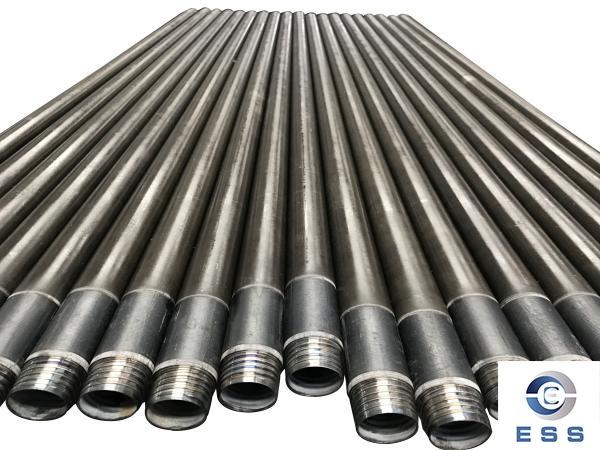Drill pipe: Primary purchase guide

Drill pipe introduction
Drill pipe is a steel pipe with threads at the tail end, which is used to connect the surface equipment of the drilling rig and the drilling and grinding equipment or bottom hole device at the bottom of the well. Drill pipe is made of seamless steel pipe, usually composed of two parts: the drill pipe body and the drill pipe joint. The pipe body and the joint are welded together by friction, which is a kind of octg pipe.
There are many factors to consider when choosing a drill bit and drill pipe model. The drill pipe size, length, shaft diameter, drill bit shape, material, joint type, steel grade, thickening form and torsional performance of the drill pipe will affect the use effect, so you need to choose according to your needs. The following are some recommended guidelines based on API RP 7G standard, which provide information on the selection and use of drill pipe:
Influencing factors
1.Drill pipe size
The nominal size (outer diameter) and wall thickness of the drill pipe are the key parameters when selecting. The API standard provides a variety of sizes of drill pipe to meet different drilling needs.
2.Drill pipe length
The choice of drill pipe length needs to be determined according to the specific working scenario. If you need to drill at a smaller depth, choose a shorter drill pipe, such as 6 inches or 8 inches; if you need to drill at a deeper place, choose a longer drill pipe, such as 12 inches or 18 inches. There are usually three types of drill pipe lengths: the first type is 5.486-6.706 meters (18-22 feet), the second type (commonly used) is 8.230-9.144 meters (27-30 feet), and the third type is 11.582-13.716 meters (38-45 feet).
3.pipe diameter
The drill pipe diameter is also an important factor affecting its use effect. Usually, the drill pipe diameter is between 1/16 inches and 1/4 inches. The specific choice needs to be determined according to factors such as material hardness and drilling size. If you need to drill on a material with higher hardness, you need to choose a drill pipe with a smaller diameter.
4.Drill bit shape
The shape of the drill bit is also one of the factors to be considered when choosing a drill bit and drill rod. Common drill bit shapes include straight drill bits, flat drill bits, spline drill bits, etc. Drill bits of different shapes are suitable for different drilling scenarios. For example, straight drill bits are suitable for shallow drilling depths, while flat drill bits are suitable for deep drilling depths.
5.Material and steel grade
The drill pipe material is usually E-75 steel grade, which ensures good strength and toughness. The higher the steel grade, the stronger the torsion resistance and pressure bearing capacity of the drill pipe.
6.Joint type
The types of drill pipe joints include NC26, NC31, NC38 and NC40, etc. These joint types are related to the torsion resistance ratio and tightening torque of the drill pipe.
7.Thickening form
The thickening forms of drill pipe include external thickening (EU) and internal thickening (IU), as well as internal and external thickening (IEU). The thickening form affects the torsion resistance and pressure bearing capacity of the drill pipe.
8.Torsion resistance
The torsion resistance of the drill pipe is an important factor in selecting a drill pipe.Drill pipe needs to be able to withstand high torque to adapt to complex drilling conditions. For example, different levels of torsion resistance such as X-95, G-105 and S-135 ensure the stability and reliability of the drill pipe during drilling.
9.Outer and inner diameter of drill pipe joints
The outer and inner diameters of the joints are crucial to the connection and sealing performance of the drill pipe.
10.Length of male and female joints of drill pipe
This affects the stability and length of the drill pipe connection.
11.Special applications
For special steel grades such as BNK C95S, it is suitable for sulfur-containing oil wells to ensure the performance of drill pipe in harsh environments.
Conclusion
There are many types of drill bits and drill pipes. Choosing a model that suits you needs to consider many aspects. Only by fully understanding and selecting various factors can drilling be easier and more efficient.













 Eastern Steel Manufacturing Co.,Ltd not only improve product production and sales services, but also provide additional value-added services. As long as you need, we can complete your specific needs together.
Eastern Steel Manufacturing Co.,Ltd not only improve product production and sales services, but also provide additional value-added services. As long as you need, we can complete your specific needs together.










